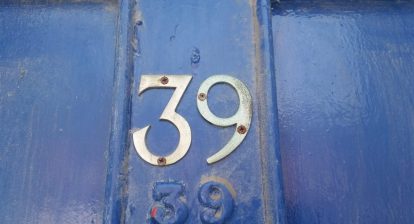Every year, countless people in America, and around the world, line up at haunted attractions. Whether it is a hayride, scavenger hunt, maze, or haunted house, these attractions rake in millions of dollars every year. Many go to be scared, to challenge their resolve, or even out of curiosity, which begs the question: When did this tradition start?
Haunted attractions are too polished and comprehensive to have just sprouted up within the past twenty years. In reality, haunted houses actually date back to ancient times.
These attractions have their roots in Ancient Egypt, Greece, and Rome. In Egypt, there was a fear of body snatchers and other evil spirits that could possess a person, so the solution was to create rooms that were designed to scare the entity out of you. The infamous mazes and snake rooms of this time served the important purpose of religious cleansing for the soul.
On the other hand, in Greece and Rome, the mythos surrounding their Gods and Goddesses contained several monsters and hideous creatures who were depicted in theater productions. These societies took their drama very seriously and were infamous for intense props, costume design, and even the first remedial special effects.

Nevertheless, traveling freak shows and circuses began in the early 1900s, displaying grotesque human deformities and other oddities that disgusted and frightened audiences, but from which they could not look away.
Then, in 1915 in the United Kingdom, the first official haunted house attraction was opened in the Edwardian Fair as the Orton and Spooner Ghost House. The now adorable, tiny funhouse shook its floors and had demonic sounds screaming from phonographs in near pitch black darkness.
The French counterpart, the Theatre du Grand Guignol, emerged around the same time and purportedly shocked guests with realistic special effects that were exhibited in the terrifying short plays they put on. Guests were reported to have left screaming or to have thrown up while they watched five to six gruesome plays centered around sadistic acts of murder and revenge.
 Some examples of these plays were; L’Horrible Passion, by André de Lorde, in which a nanny strangles the children in her care; Le Baiser dans la nuit by Maurice Level, which centers around a young woman who visits the man whose face she horribly disfigured with acid; and Un Crime dans une Maison de Fous, by André de Lorde which depicts two hags in an insane asylum using scissors to blind a young, pretty fellow inmate out of jealousy.
Some examples of these plays were; L’Horrible Passion, by André de Lorde, in which a nanny strangles the children in her care; Le Baiser dans la nuit by Maurice Level, which centers around a young woman who visits the man whose face she horribly disfigured with acid; and Un Crime dans une Maison de Fous, by André de Lorde which depicts two hags in an insane asylum using scissors to blind a young, pretty fellow inmate out of jealousy.
Interestingly enough, the haunted houses that we know today, as a staple in the Halloween tradition, stem from Walt Disney’s Haunted Mansion. It first opened up in Los Angeles in 1969. Disney took inspiration from his predecessors in the creation of the mansion, but he introduced another element we know well today: animatronics or programmed robots.
Disney took the same concept from other animatronics he used, like in the It’s A Small World ride, and gave them a Halloween theme to scare guests, along with an upgrade in special effects and decoration. Not only did this raise the bar for future haunted houses, it sparked a widespread interest in such attractions, which can account for one of the reasons why there are so many around today.
After Disney’s booming success with The Haunted Mansion, the United States Junior Chamber, otherwise known as the Jaycees began using the money raised from admission tickets for charity during the 1970s. Additionally, with the rise in popularity of horror movies in the 1980s, patronage of such attractions skyrocketed and led to the present state of the industry we know and love.
 Next time you find yourself in the line for a haunted attraction, take some time to appreciate the rich history of this industry because you may not be able to when you are running away, screaming.
Next time you find yourself in the line for a haunted attraction, take some time to appreciate the rich history of this industry because you may not be able to when you are running away, screaming.






